What you need to know when configuring the power of the ePMP 1000 transmitter from Cambium Networks
When configuring links on ePMP 1000 equipment from Cambium Networks, there are often issues related to transmitter power configuration, both on the base station side and on subscriber stations.
Frequently asked questions: why the real transmitter power is different from the one that is configured for the UI, why the real power periodically jumps on the devices, although the settings have not changed, and others.
Today we will try to consider all the nuances of the transmitter power configuration.
Let's start with the fact that all devices of the ePMP 1000 line with the latest available firmware version (2.6) have 3 main modes of robots (protocol):
')
- TDD - operation mode with fully implemented TDD and GPS synchronization mechanism, for operation in PMP (point-to-multipoint) mode. For PTP (point-to-point) links, TDD PTP can be used, which is the same TDD mode with a limit on the connection of one subscriber station;
- ePTP Master / Slave - mode that does not support GPS synchronization, for operation in PTP (point-to-point) mode with a minimum value of transmission delay;
- Standard W-Fi - mode based entirely on the 802.11n standard.
Also, each ePMP device can be used as a base station (AP - Access Point) or subscriber station (SM - subscriber module).
Difference in displaying transmitter power on AP and SM.
At once I want to focus on the fact that in order to understand this issue, you need to know about the differences in the processing of subscriber traffic and control traffic on ePMP equipment.
Subscriber traffic will always be transmitted at the highest possible MCS. Control traffic is always transmitted to MCS1 or 0 depending on the configuration (option available on the UI). Thus, the transmitter power for transmission of management packets and information packets will differ (to this question we will return a little later).
Thus, the transmission power of the traffic management is always displayed on the AP, and the transmit power of the data traffic is displayed on the SM.
This is not accidental, the AP can transmit traffic to each SM in PMP mode on its MCS, and accordingly, with its own power, and only the transmit power of data packets is the same for all SMs.
In general, the transmitter power is affected by three main limitations:
- Regulatory (Regulator)
- ATPC (Adaptive Transmission Power Control) - ATPC only works in TDD mode!
- Dynamic TX Power (Dynamic Transmit Power)
Controller - limiting transmitter power in accordance with the requirements of the competent authorities, depending on the country code used. Depends on the used Country Code, frequency band, robot mode (PMP / PTP). Works on both AP and SM.
ATPC (Adaptive Transmission Power Control) is an adaptive automatic power control mechanism. The mechanism is designed to reduce secondary Uplink interference when working on multi-sector towers with frequency reuse. Secondary interference is called interference at a specific base station from an SM from a neighboring sector. Reducing the effect of secondary interference is achieved by reducing the “excess” power on the SM.
The configuration of the ATPC parameters is performed on the AP side in the Power Control section on the UI. The only parameter is the Subscriber Module Target Receive Level, i.e. Desired UL receive power from SM. Thus, if the AP receives a signal with a level higher than that specified in the Subscriber Module Target Receive Level, the transmitter power to the SM will be automatically reduced. Conversely, if the power is insufficient, then it will be increased, if it is possible in accordance with the Regulator.

On the SM side, there is a Tx Power - Auto or Manual configuration option. In auto mode - the configuration is automatic, which is understandable.
However, the Manual option should not be misleading, in this mode Tx Power is also regulated by ATPC, the value set on the UI will only be the upper level, above which ATPC will not be able to increase the transmit power on the SM.

Dynamic TX Power - the limitation caused by the quality indicators of the receiving-transmitting system. Transmitter power limitation is associated with an increase in the value of the error vector (EVM - Error Vector Magnitude) with higher MCS with more complex modulation types. The limitation has a frequency dependence and also depends on the type of device. For each device of the ePMP line, there are separate Dynamic Tx Power restriction tables.
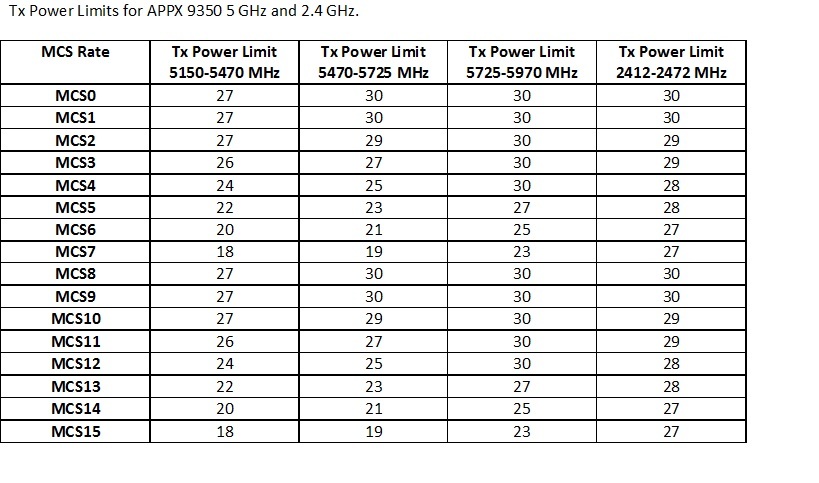
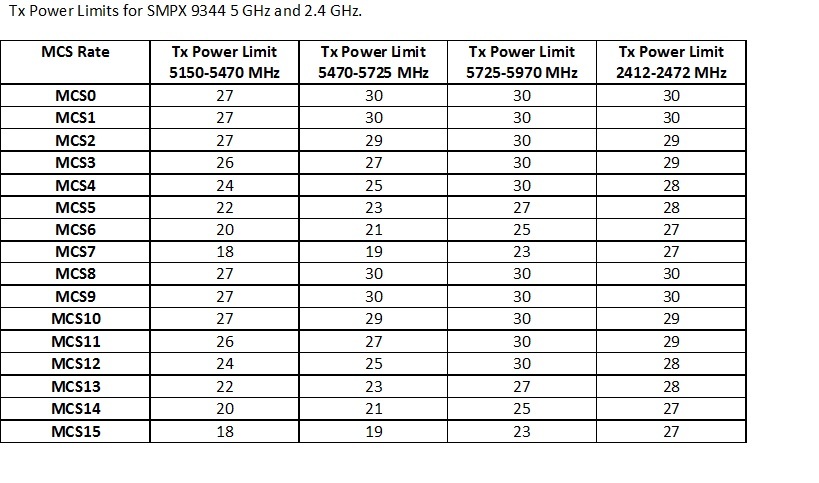
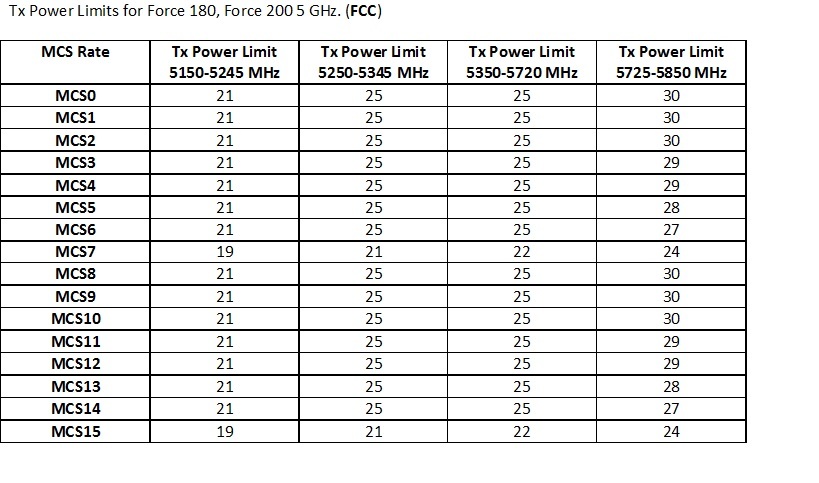
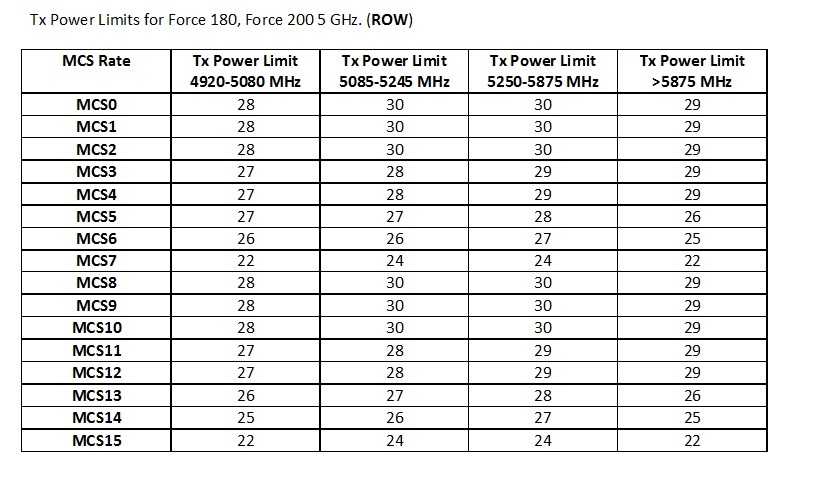
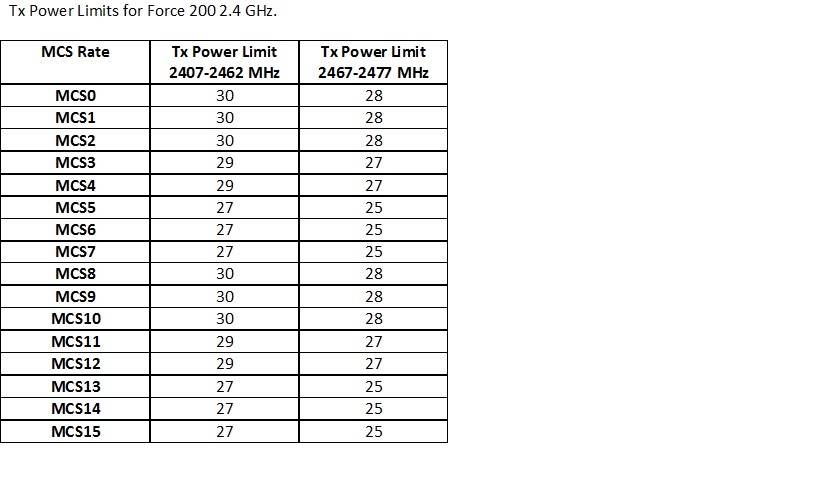
Frequently asked questions: why the real transmitter power is different from the one that is configured for the UI, why the real power periodically jumps on the devices, although the settings have not changed, and others.
Today we will try to consider all the nuances of the transmitter power configuration.
Let's start with the fact that all devices of the ePMP 1000 line with the latest available firmware version (2.6) have 3 main modes of robots (protocol):
')
- TDD - operation mode with fully implemented TDD and GPS synchronization mechanism, for operation in PMP (point-to-multipoint) mode. For PTP (point-to-point) links, TDD PTP can be used, which is the same TDD mode with a limit on the connection of one subscriber station;
- ePTP Master / Slave - mode that does not support GPS synchronization, for operation in PTP (point-to-point) mode with a minimum value of transmission delay;
- Standard W-Fi - mode based entirely on the 802.11n standard.
Also, each ePMP device can be used as a base station (AP - Access Point) or subscriber station (SM - subscriber module).
Difference in displaying transmitter power on AP and SM.
At once I want to focus on the fact that in order to understand this issue, you need to know about the differences in the processing of subscriber traffic and control traffic on ePMP equipment.
Subscriber traffic will always be transmitted at the highest possible MCS. Control traffic is always transmitted to MCS1 or 0 depending on the configuration (option available on the UI). Thus, the transmitter power for transmission of management packets and information packets will differ (to this question we will return a little later).
Thus, the transmission power of the traffic management is always displayed on the AP, and the transmit power of the data traffic is displayed on the SM.
This is not accidental, the AP can transmit traffic to each SM in PMP mode on its MCS, and accordingly, with its own power, and only the transmit power of data packets is the same for all SMs.
In general, the transmitter power is affected by three main limitations:
- Regulatory (Regulator)
- ATPC (Adaptive Transmission Power Control) - ATPC only works in TDD mode!
- Dynamic TX Power (Dynamic Transmit Power)
Controller - limiting transmitter power in accordance with the requirements of the competent authorities, depending on the country code used. Depends on the used Country Code, frequency band, robot mode (PMP / PTP). Works on both AP and SM.
ATPC (Adaptive Transmission Power Control) is an adaptive automatic power control mechanism. The mechanism is designed to reduce secondary Uplink interference when working on multi-sector towers with frequency reuse. Secondary interference is called interference at a specific base station from an SM from a neighboring sector. Reducing the effect of secondary interference is achieved by reducing the “excess” power on the SM.
The configuration of the ATPC parameters is performed on the AP side in the Power Control section on the UI. The only parameter is the Subscriber Module Target Receive Level, i.e. Desired UL receive power from SM. Thus, if the AP receives a signal with a level higher than that specified in the Subscriber Module Target Receive Level, the transmitter power to the SM will be automatically reduced. Conversely, if the power is insufficient, then it will be increased, if it is possible in accordance with the Regulator.

On the SM side, there is a Tx Power - Auto or Manual configuration option. In auto mode - the configuration is automatic, which is understandable.
However, the Manual option should not be misleading, in this mode Tx Power is also regulated by ATPC, the value set on the UI will only be the upper level, above which ATPC will not be able to increase the transmit power on the SM.

Dynamic TX Power - the limitation caused by the quality indicators of the receiving-transmitting system. Transmitter power limitation is associated with an increase in the value of the error vector (EVM - Error Vector Magnitude) with higher MCS with more complex modulation types. The limitation has a frequency dependence and also depends on the type of device. For each device of the ePMP line, there are separate Dynamic Tx Power restriction tables.





Source: https://habr.com/ru/post/278463/
All Articles